This Acebeam E70 was provided by Acebeam for review.
Concept
The Acebeam E70 is a large everyday carry, or household general-purpose flashlight powered by a 21700 battery and controlled by an electronic tailswitch. I've argued more than once that a 21700 is too much battery for casual carry in a pants pocket, and the E70 has not changed my position. It can be carried in most pants pockets in a pinch though while lights using the thicker 26650 battery cannot. The E70 is at its best carried in a jacket pocket or kept in the center console of a car. A choice of high-output or high-CRI LEDs is available, which should satisfy a wide range of users. I'll always take full color over a few more lumens, and the high-CRI version is tested here.
Design
The E70's design stands visually by using a blue anodized inner battery tube visible through slots cut in the outer tube. I like the visual effect, though the slots can accumulate dust and debris. Functionally, the nested tube design enables an electronic tailswitch with shortcuts without the use of a proprietary battery. Leaf springs on the driver ensure reliable contact with the inner signal tube even if the light is subjected to impact or severe vibration. Acebeam has significant experience with the nested-tube design, and all examples of it I have used have been completely reliable, in contrast to cheaper implementations from other brands.
Acebeam's use of the Getian FC40 LED is a first from a major brand. It was previously only available in hobbyist-oriented flashlights shipped from China, or as a bare LED that could be installed in a small number of suitable lights. This LED is known for great color quality at high output, though there have been some variations in tint noted in the flashlight community. The tint and color rendering from this example are spectacular. I noticed colors looking better with the E70/FC40 than with lights using the Nichia 144A and Luminus SST-20, which are established favorites for accurate color.
Those traits don't come free, unfortunately; the FC40 is much less efficient than the E70's other LED option, the Cree XHP70.2. I think that's a good trade and a better choice for a high-CRI option than a high-CRI bin of the XHP70.2, as the FC40 produces more pleasant light than any high-CRI Cree product I've seen.
The user interface of the E70 resembles that of other e-switch Acebeams with shortcuts to low, last-used, and strobe. To prevent inadvertent activation, Acebeam has moved the shortcut to last-used to a double-click. I thought I wouldn't like that when I first read about it, but I don't find it objectionable. My only real problem with this decision is that there's no shortcut to turbo; triple-click should do that, not strobe.
Execution
As usual, Acebeam's build quality is very good. Everything is smooth, well-machined, and well-finished. Using the light under water resulted in no signs of water ingress. Performance specs are within a reasonable margin of advertised.
Light quality is excellent, and the beam from the E70 is more even in tint and better looking than some other FC40 lights I've seen reviewed online.
Conclusion
This is a can of sunlight. If you want a can of sunlight in your jacket pocket, and you should, the E70/FC40 delivers.
Specifications
| Spec | - |
|---|---|
| Battery | 21700 |
| LED | Getian FC40 4500K 95 CRI |
| Color temperature | 4893K |
| Color rendering index | 96.2 |
| Max output | 3273 lm |
| Max throw | 208 m |
| Max sustainable output | 1060 lm |
| Best efficiency | 106 lm/W @ 549 lm |
| Candela per lumen | 3.09 |
| Length | 128.3 mm |
| Head diameter | 30 mm |
| Weight | 102 g (without battery) |
| Waterproofing | IP68 - 2m depth for 30 minutes |
| Charging | None (battery with USB-C port available) |
| Low Voltage Protection (LVP) | Yes, ~2.9V |
| Lockout | mechanical and electronic |
| Rating | ★★★★☆ (recommended) |
Highlights
- The tint looks just like daytime sunlight
- The color rendering is spectacular, to the point that I noticed it being better than other high-CRI flashlights before testing
- Acebeam's boost driver seems fairly efficient
- The build quality is very good
Lowlights
- The FC40 is very inefficient
- The thermal regulation allows the body of the light to get too hot for comfort
- Battery compatibility could be better
- There is no shortcut to turbo from off
Details and technical analysis
Versions
The E70 offers a choice of Getian FC40 high-CRI LED in 4500K or Cree XHP70 high-output LED in 5000K or 6500K. It is available in aluminum, copper, brass, stainless steel, and titanium body materials. Titanium offers the choice of stonewashed or rainbow PVD finishes. Steel and titanium models have slightly reduced maximum output for thermal reasons.
This is the aluminum FC40 version.
Accessories
The E70 includes a pouch, lanyard, charging cable, and user manual. A battery is optional.
I would have preferred a holster rather than the included pouch.
Modes and user interface
| State | Action | Result |
|---|---|---|
| Off | Long-press | Ultra-Low |
| Off | Double-click | last-used |
| Off | Triple-click | Strobe |
| On | Double-click | Turbo |
| Turbo | Double-click | last-used |
| Off | Hold 5 seconds | lockout |
| Lockout | Hold 5 seconds | Ultra-Low |
Double-click for on, with single-click doing nothing is an unusual user interface selected to prevent accidental activation. I didn't find it difficult to get used to, however I'm disappointed the triple-click shortcut activates strobe, which I do not use, rather than turbo, which I do. There is a mechanical lockout by loosening the head a quarter turn.
Output, runtime, and efficiency
Standby current was measured at 146 uA, which is a little high. A 5000 mAh battery would be drained in 4 years. Mechanical lockout does prevent standby drain in the E70, so an E70 stored for emergency use should be locked out.
| Mode | Advertised Lumens | Estimated Lumens | Advertised throw (FL1 meters) | Estimated throw (FL1 meters) | Candela |
|---|---|---|---|---|---|
| Ultra-Low | 2 | 4 | - | - | |
| Low | 70 | 96 | 47 | 33 | 279 |
| Mid1 | 180 | 236 | 64 | 53 | 709 |
| Mid2 | 420 | 549 | 80 | 82 | 1697 |
| High | 880 | 1093 | 116 | 117 | 3444 |
| Turbo | 2800 | 3273 | 200 | 208 | 10812 |
| Mode | Estimated lumens | Time to 80% | Time to 50% | Time to 10% | Efficiency (lm/W) |
|---|---|---|---|---|---|
| Mid1 | 236 | 431 minutes | 431 minutes | 492 minutes | 104 |
| Mid2 | 549 | 196 minutes | 196 minutes | 219 minutes | 106 |
| High | 1093 | 93 minutes | 93 minutes | 93 minutes | 97 |
| Turbo | 3273 | 1 minute | 1 minute | 83 minutes | 88 |
Runtimes were marginally shorter than advertised, but outputs were higher. I'm not complaining. I will complain a little about the heat though; the E70 gets uncomfortably hot when allowed to regulate its own temperature. Those with sensitive skin in warm climates should switch to Mid2 manually for long-term use. Regardless of cooling, the E70 will throttle to High after 2 minutes.
Light quality
This is the average of three readings taken on Mid1 from the center spot diffused with DC Fix diffusion film using an X-rite i1Pro spectrophotometer.
| Color Temperature | Tint Duv | CRI | CRI R9 (deep red) | CRI R12 (deep blue) |
|---|---|---|---|---|
| 4893K | 0.001334 | 96.2 | 92.2 | 71.4 |
These are excellent numbers for any LED, and unmatched for anything with so much output from a single package. Of LEDs available in production flashlights, only the Nichia E21A comes close. The most hardcore tint snobs will likely note the Duv is over zero, meaning the tint is technically green of neutral, but this is a very neutral looking LED in reality.
Beamshots
E70 vs Thrunite TC20v2
E70 vs Zebralight SC64c LE
E70 vs Thrunite TC20v2
E70 vs Armytek Wizard Pro 144A
E70 vs Zebralight SC64c LE
E70 vs Armytek Wizard Pro 144A
E70 vs BLF 348 (with different exposure settings)
Batteries and charging
The E70 optionally includes an Acebeam 5100 mAh 21700 battery with a USB-C port on it. The battery, unusually can function as a USB powerbank. I'm impressed with the inclusion of such a function, though I do recommend caution when using a Li-ion battery with its terminals exposed to the world despite the battery's short-circuit protection. A C-C cable works to charge the battery, but a C-A adapter is required to power another device as a powerbank. An A-C cable with a female A port is included, allowing charging the battery from an A port or powering USB devices, but third-party C-A adapters also work for that purpose. This cell is 77mm long and will not fit in most older slot charger designs, but a few recent chargers have longer slots.
Protected 21700 batteries from other brands work reliably provided they can supply at least 10A current. Turbo will trip protected cells with lower ratings. Unprotected, flat-top cells function, but can disconnect and turn off the flashlight if it is shaken. I recommend the use of a spacer in the event unprotected cells are used; rare earth magnets on the end of the battery (negative is safer) work well for this purpose. There's a low-voltage shutoff around 3.0V.
The product page says an 18650 battery is "acceptable", but does not mention the fact that it will not make contact without an adapter or spacer. 9mm of magnets made a Sony VTC6 work.
Modification potential
The bezel is screwed on tight, but not glued. Removing it provides access to the reflector and emitter. Suitable replacements include the FC40 in other color temperatures, and various Cree XHP70 variants, though it would make more sense to use the 6-volt XHP70 version of the E70 for that, as running at lower voltage is more efficient.
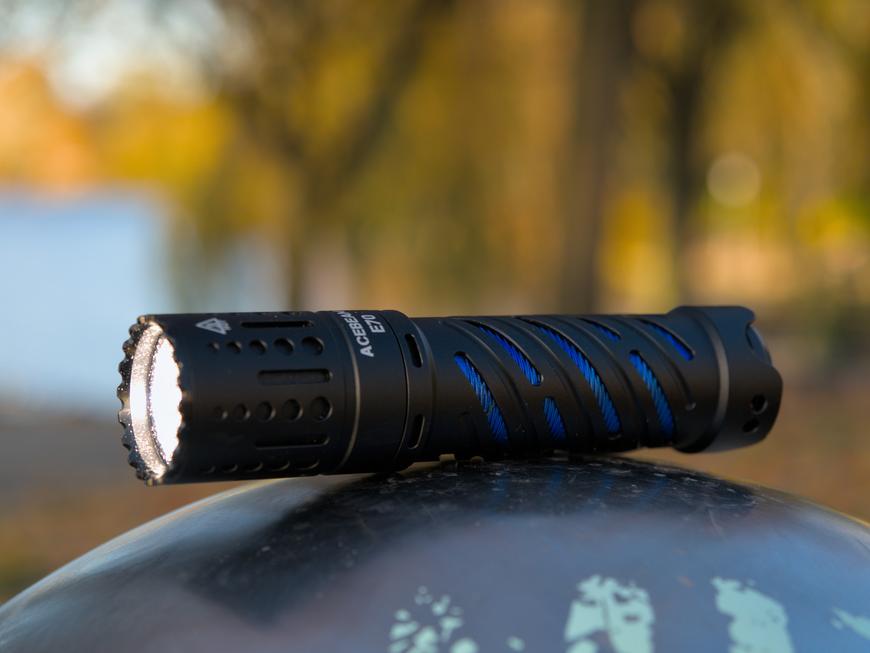
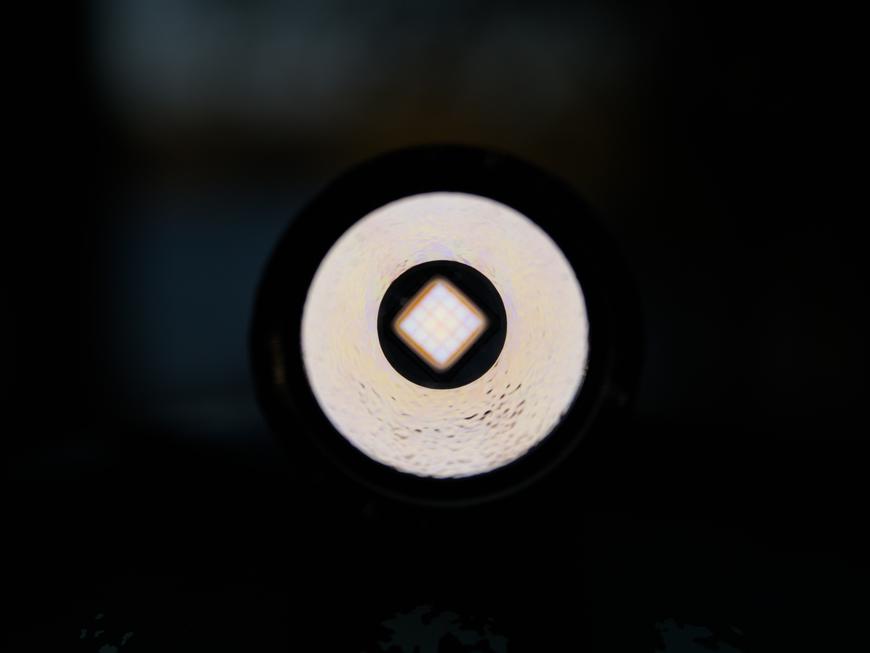
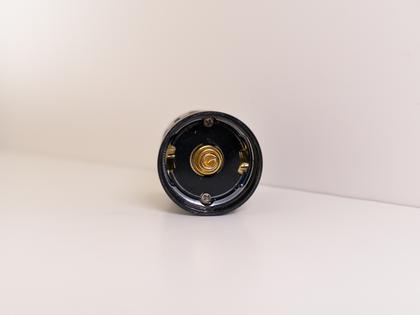
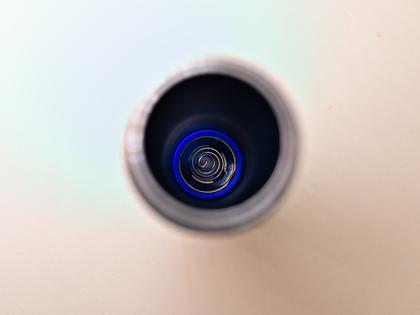
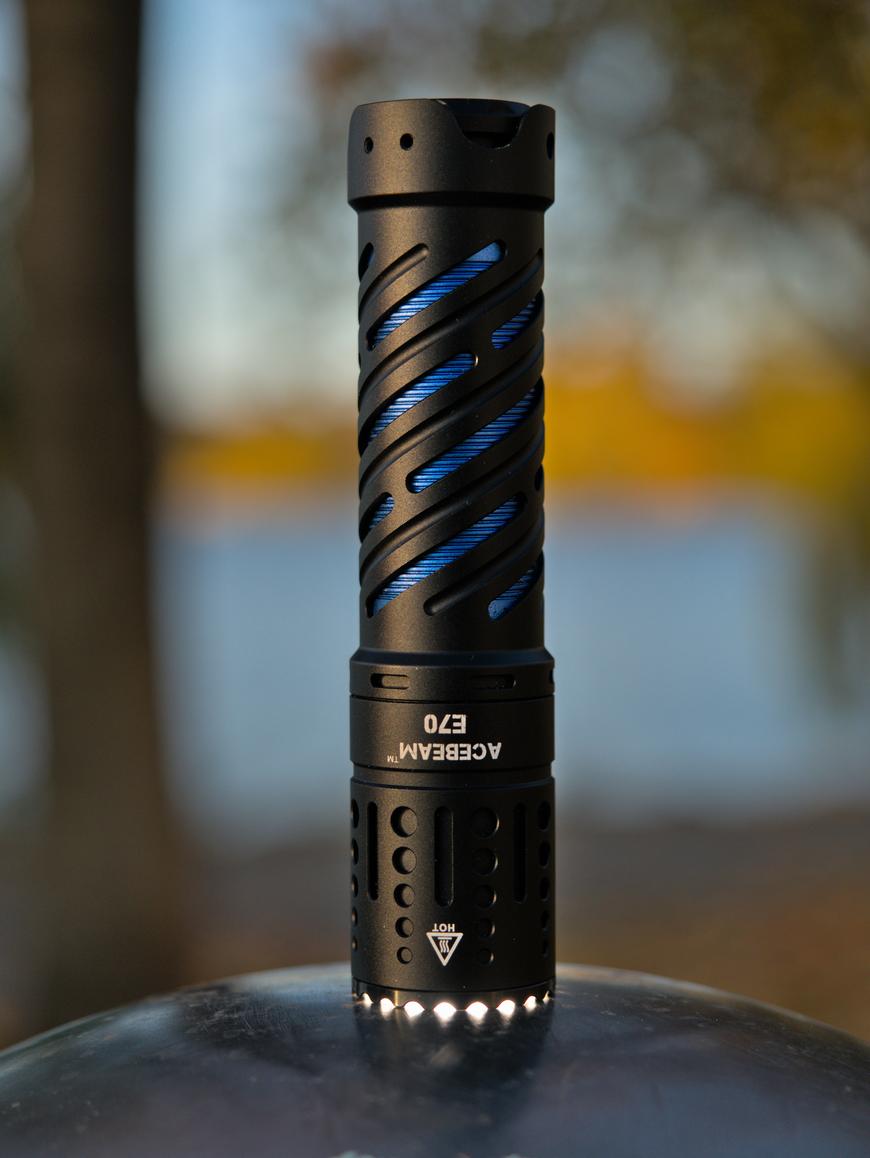
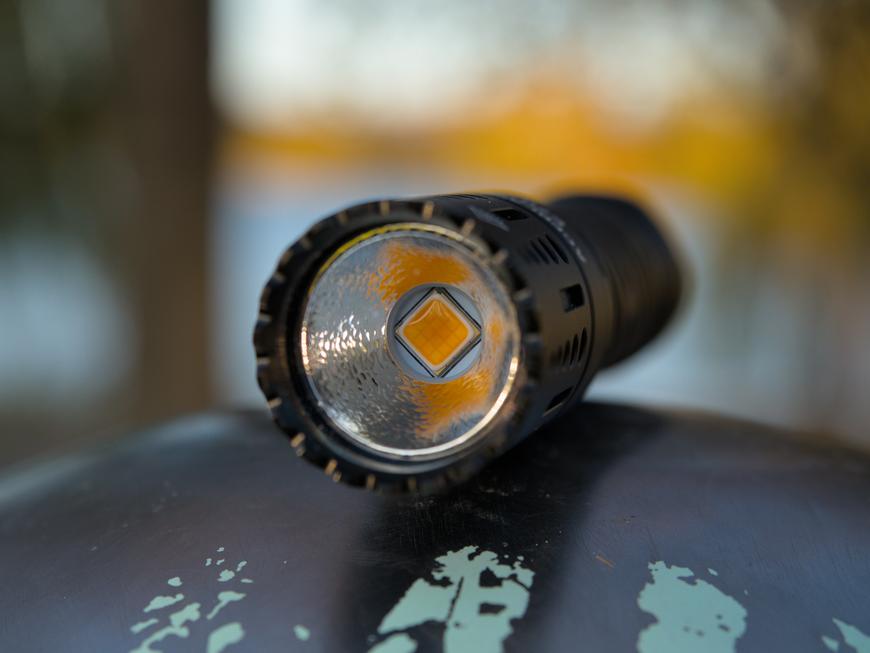
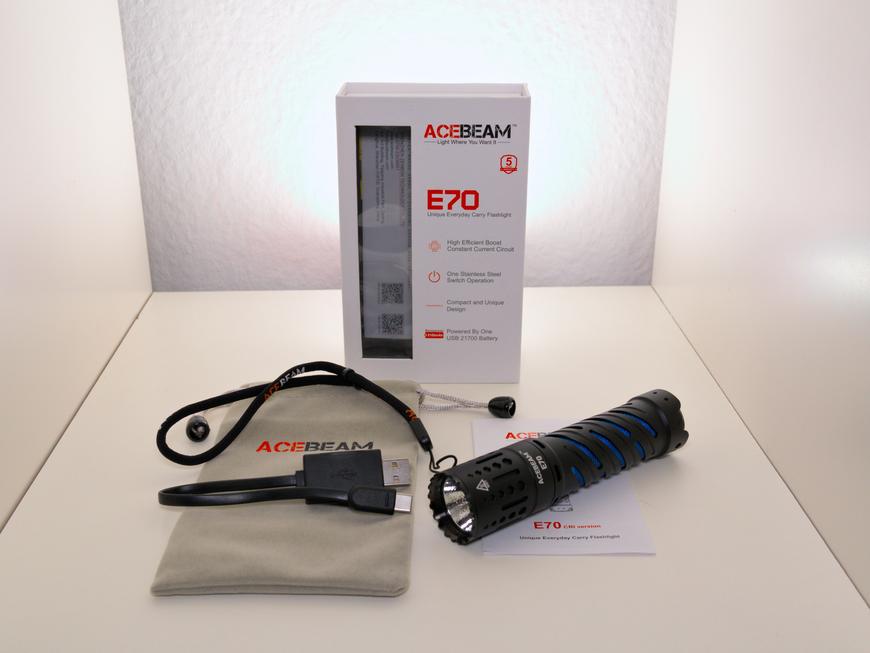
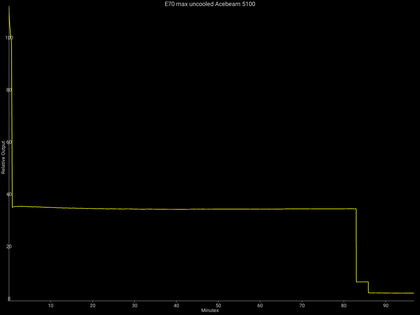
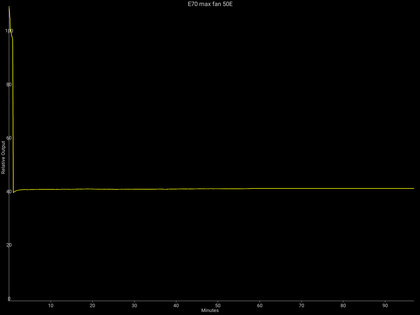
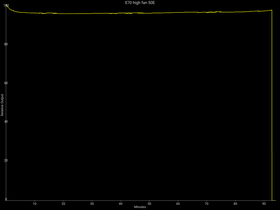
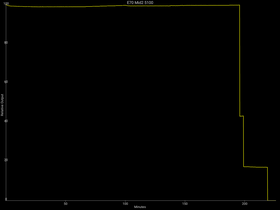
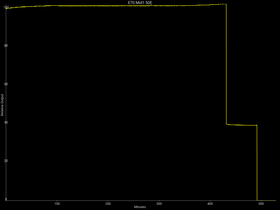
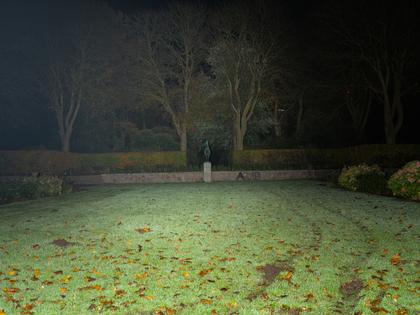
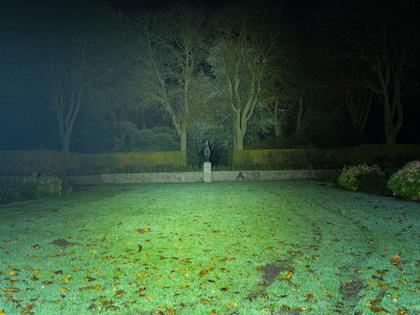
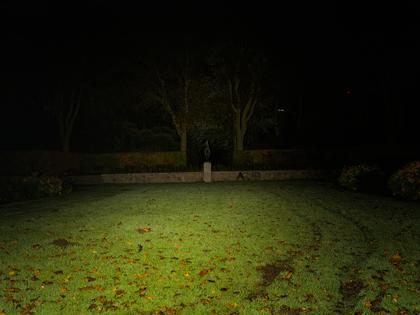
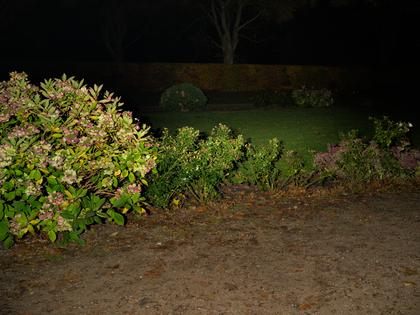
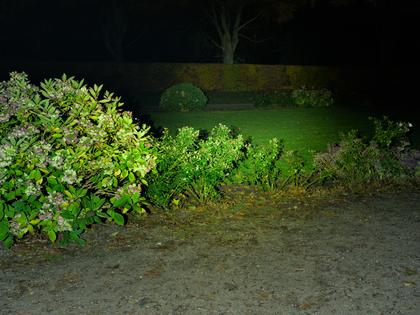
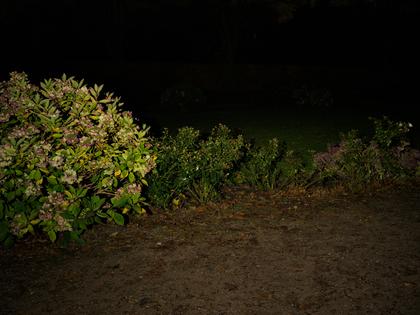
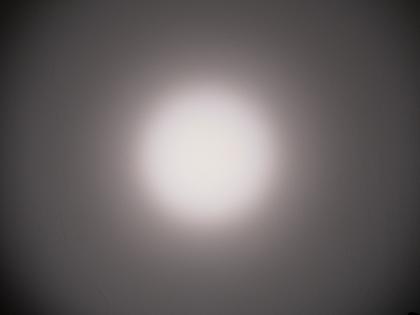
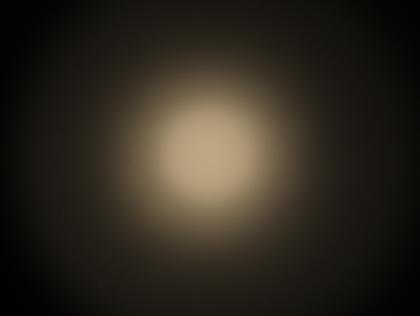

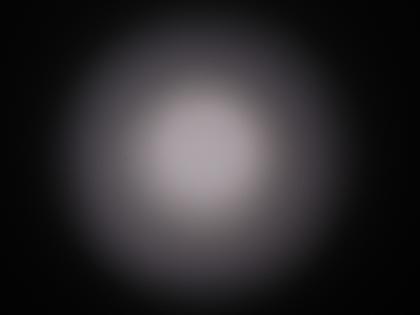
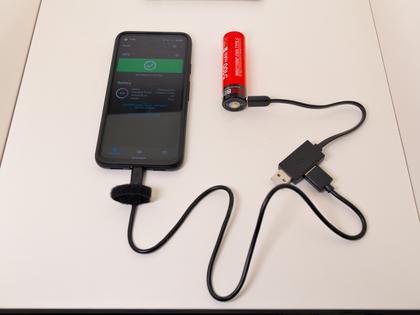
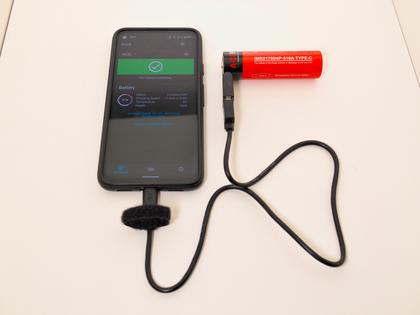
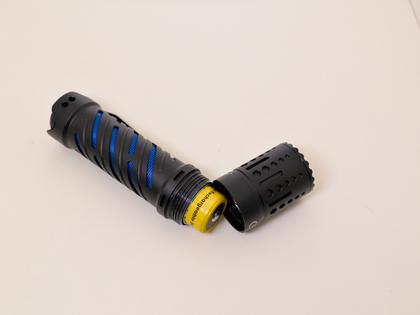
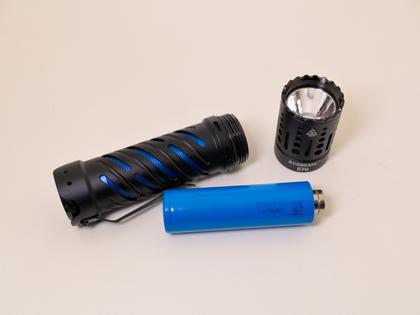
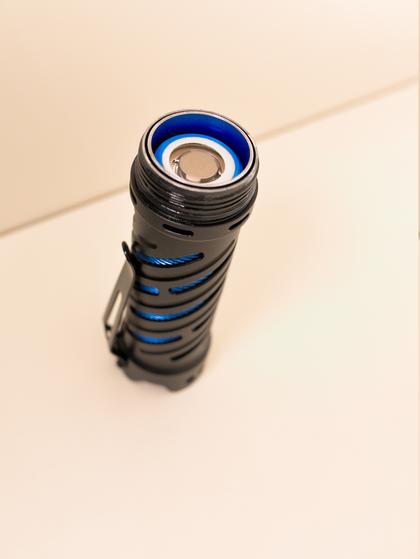
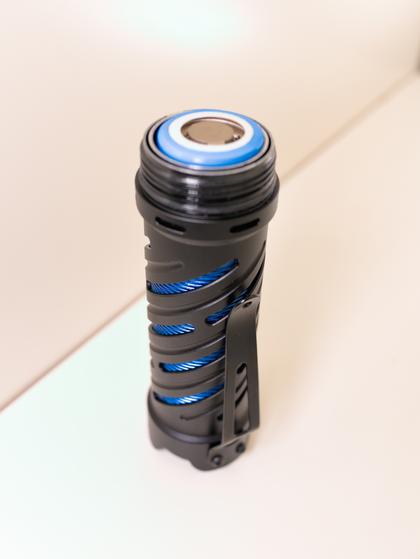
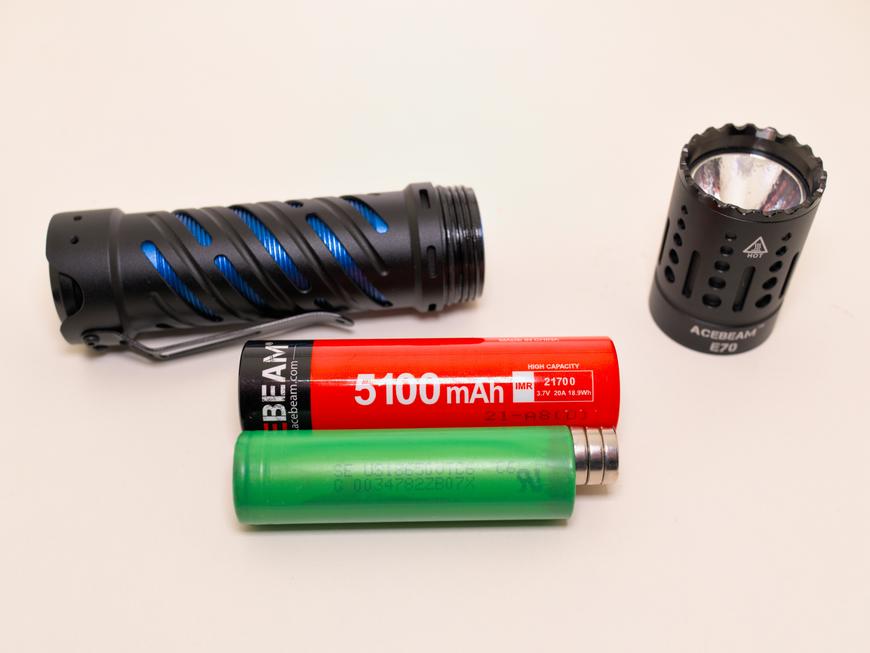
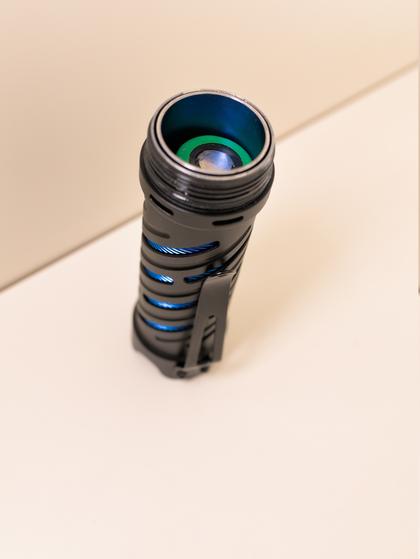
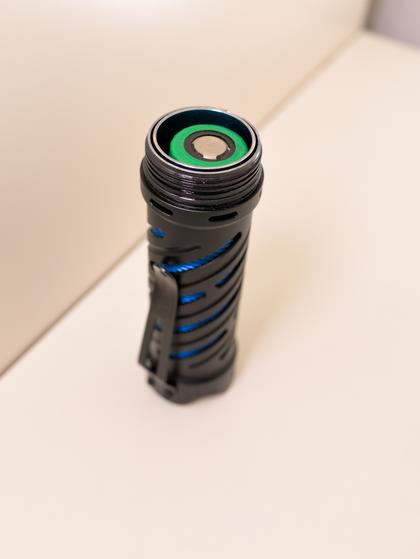
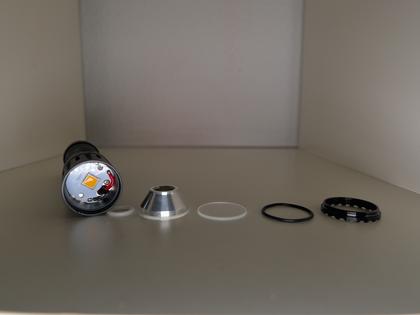
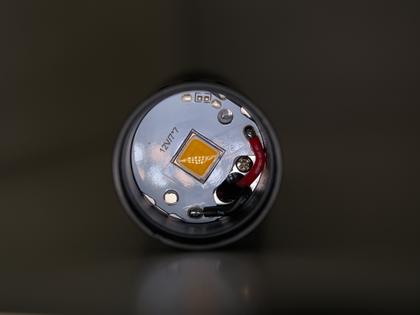
Comments
You can use your Mastodon account to reply to this
Reply
Loading...